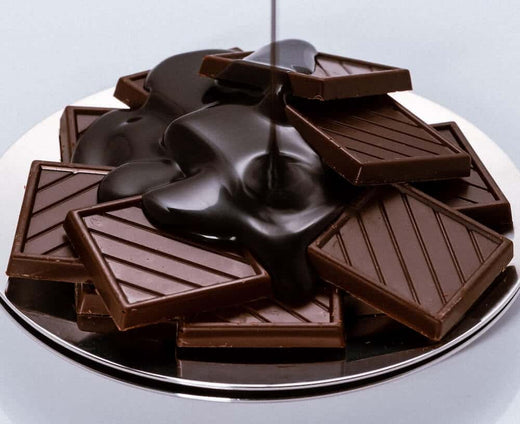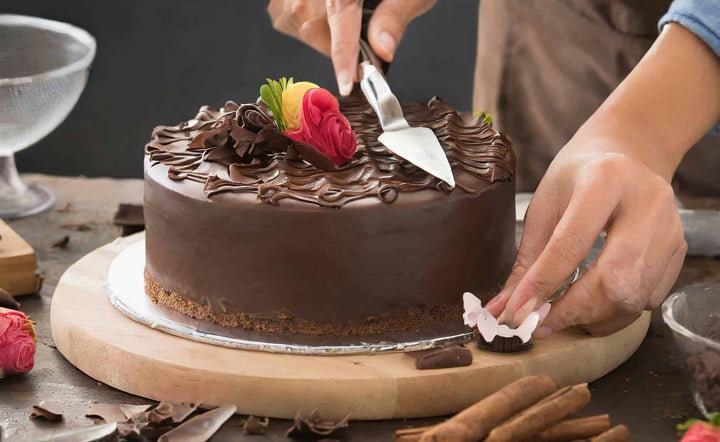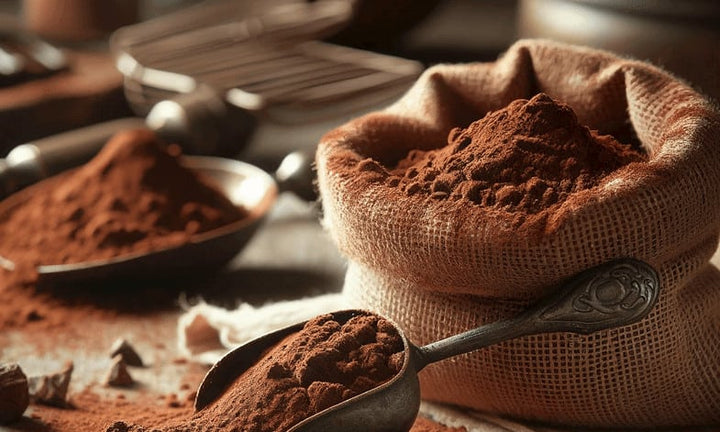With so many different types of chocolate available, from white to dark and milk to ruby, plus all the flavour combinations and dietary variations (vegan, vegetarian, gluten-free, etc.)
It can sometimes feel like a minefield when deciding what chocolate is best to use, especially when cooking and baking.
So that is why this blog exists. To help you find the right chocolate or the right occasion.
Let's talk about plain chocolate.
What is Plain Chocolate?
Plain chocolate, also known as dark chocolate or semi-sweet chocolate, is a type of chocolate that contains a higher percentage of cocoa solids and cocoa butter than milk chocolate.
It has a more intense, rich cocoa flavour and is less sweet compared to milk chocolate, which contains added milk solids.
Plain chocolate typically contains cocoa solids, cocoa butter, sugar, and sometimes vanilla or other flavourings but does not have any milk ingredients.
The exact percentage of cocoa solids in plain chocolate can vary, but it generally ranges from 50% to 85% or even higher, with the higher percentages providing a more bitter and intense chocolate flavour.
Dark chocolate is often considered to be a healthier option compared to milk chocolate, as it contains more antioxidants and less sugar.
(You might also be interested in reading this post asking: what is chocolate?)
Is Plain Chocolate Dark Chocolate?
The simple answer is Yes! Plain chocolate is dark chocolate.The term plain chocolate was used years ago before milk chocolate was introduced.
After this, the term dark chocolate was used to distinguish between milk and dark chocolate.
Some recipe books still use the term plain in reference to dark chocolate.
So wherever you see a recipe calling for plain chocolate, you should always use dark chocolate.
What is the Best Plain Chocolate for Cooking?
We would always recommend using couverture chocolate rather than regular dark chocolate.
Couverture chocolate has a higher content of cocoa butter, allowing it to melt faster and making it easier to work with.
We've created Easymelt dark chocolate mini shards.
These thin little squares are perfect for cooking, baking, melting, dipping, flavouring or decorating your chocolate creations.
Click here to find out more...
(You might also like to take a read of this post asking: What is Ruby Chocolate?)
Is Plain Chocolate the Best for Baking and Cooking?
Dark chocolate is the failsafe chocolate to use in baking and cooking.
It's the professional chef's favourite, and we recommend it for most cooking and baking recipes.
The higher cocoa percentage found in dark chocolate means it's easier to melt and work with, plus it has a richer flavour and less sugar than white or milk chocolate.
(Check this post out if you are interested in the question: how many squares of plain chocolate per day should you eat?).
Is Plain Chocolate Vegan?
Plain chocolate is naturally vegan as it doesn't contain milk or dairy products.
However, you should always read the ingredients label to check for allergens.
At Whitakers Chocolates, we register our dark chocolate products with the Vegan Society, meaning you can buy our products with confidence knowing they are vegan-friendly.
Plus, all our chocolates are suitable for vegetarians, and most are gluten-free.
(Always check the label to be sure, or click here to read about what chocolates are gluten-free).
Some Final Notes On Plain Chocolate and its Uses
Plain chocolate is just another name for dark chocolate.
It is an older name that isn't used as often as it used to be, the most common place you will see it is in recipe books.
Whether you are a dark chocolate lover or not, we always recommend plain chocolate as the preferred choice for cooking or baking.
If you are using white or milk chocolate in your recipe, then one important thing to consider is reducing the sugar used, as the chocolate will add the sweetness you require.
We'd love to see your cooking/baking masterpieces, so please tag using #whitakerschocolates if you share your creations on social media.
Happy baking!











